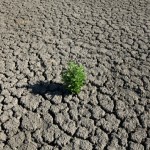El Niño a Drought-Buster for Texas? Not So Fast, Forecaster Says

ERCOT
Don't expect a lot of rain this summer in much of Texas. And beyond that, if an El Nino comes in the fall, it might not be the savior we expect.
Everyone’s waiting on El Niño, the “little boy” or “Christ Child” (since it usually shows up in the winter). This weather pattern that forms in the Pacific could end up redeeming Texas and other parts of the southwest in the form of above-average rain.
All signs point to one reappearing this fall, and typically El Niño means more rain for Texas. (Its sibling, La Niña, usually means drier-than-normal weather, a big factor in the last few years of extreme drought in the state.)
But one forecaster is saying El Niño may not be the blessing we anticipate it to be for Texas. Chris Coleman, meteorologist at the Electric Reliability Council of Texas (aka ERCOT, which manages the power grid that supplies much of the state), has put together a temperature and rainfall forecast for this summer and beyond. In it, Coleman notes that El Niños have mixed results in Texas.
“In fact, of the past six [El Niños], only one brought above-normal rainfall to the majority of the state,” Coleman writes in the forecast. “Some El Niño events have been dry.” That’s been the case in two of the past six El Niño events in Texas, where conditions were “predominantly dry,” including the monster El Niño of 1997-1998, Coleman said during a recent press call.
What’s worse, if we do get an El Niño this fall, it could bring something else along with it: hotter-than-normal temperatures.
All is not lost, as El Niños can be unpredictable. “El Niño doesn’t guarantee any specific weather pattern,” Brad Plumer writes in a helpful explainer at Vox. “It’s an influence, yes, but not necessarily a deciding factor.”
Without real relief in the form of rainfall (Coleman isn’t predicting an active hurricane season, either), and higher temperatures that could lead to more evaporation, the water situation in Texas could potentially get worse during El Niño. Currently, the state’s surface reservoirs sit at only 64 percent full. The major reservoirs for Central Texas, the Highland Lakes, are barely a third full.
“The precipitation outlooks suggests the drought will continue and potentially worsen over a good portion” of Texas, Coleman writes.

ERCOT
This summer shouldn't be as hot as some of the previous ones. But if the El Nino weather pattern develops this fall, hotter temperatures could be on the way.
The one silver lining to the potential of just a few rain clouds should Niño arrive this fall? In his near-term forecast, Coleman predicts this summer isn’t expected to be as hot as the several previous years have for much of the state. It doesn’t mean there won’t be hot days, Coleman said, “but it does mean we should see fewer sustained challenges.” There are a few regional exceptions to that forecast, however: Austin, San Antonio and the Rio Grande valley could see hotter-than-normal temperatures this summer.
The ongoing drought is forcing communities to get creative: the city of Wichita Falls, perhaps in the most dire situation of any in the state, is weeks away from having a wastewater reuse system in place that will directly recycle water used by residents. Commonly known as “toilet-to-tap,” the system would be a first for a city in the U.S. Other towns in the Lone Star State are looking into it as well, including Big Spring, Brownwood and even El Paso.

